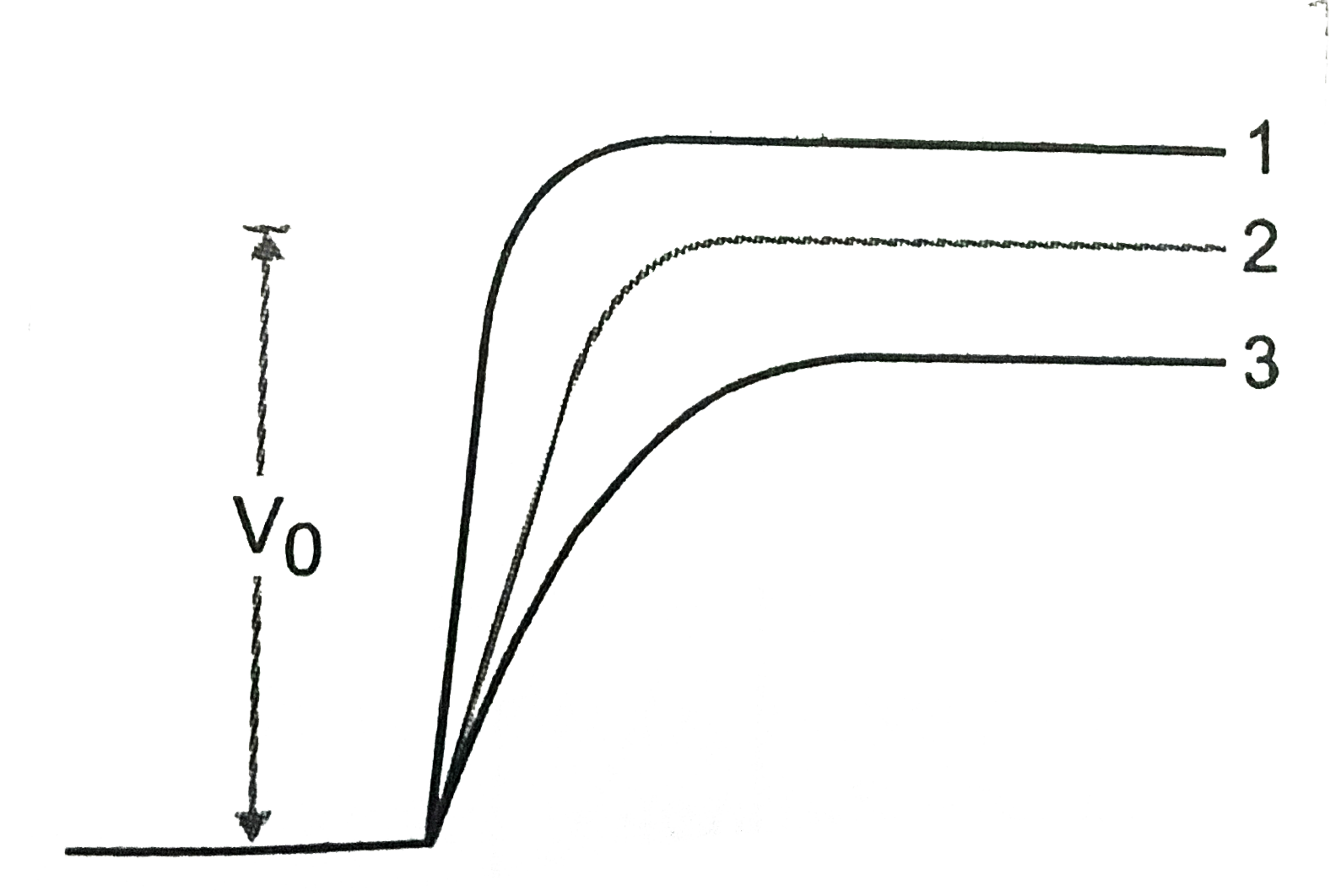In Fig . is the potential barrier across a p-n junction, when no battery is connected across the junction

1 and 3 both correspond to forward bias of junction
3 corresponds to forward bias of junction and 1 corresponds to reverse bias of junction
1 corresponds to forward bias and 3 corresponds to reverse bias of junction.
3 and 1 both correspond to reverse bias of junction.
The correct Answer is:B
Height of potential barrier decreases when p-n junction is forward biased and it increases when junction is reverse biased.
Topper's Solved these Questions
- SEMICONDUCTOR ELECTRONICS : MATERIALS , DEVICES AND SIMPLE CIRCUITS BOOK - NCERT FINGERTIPSCHAPTER - SEMICONDUCTOR ELECTRONICS : MATERIALS , DEVICES AND SIMPLE CIRCUITS EXERCISE - Assertion And Reason
15 Videos
- SEMICONDUCTOR ELECTRONICS : MATERIALS , DEVICES AND SIMPLE CIRCUITS BOOK - NCERT FINGERTIPSCHAPTER - SEMICONDUCTOR ELECTRONICS : MATERIALS , DEVICES AND SIMPLE CIRCUITS EXERCISE - Higher Order Thinking Skills
8 Videos
- RAY OPTICS AND OPTICAL INSTRUMENTSBOOK - NCERT FINGERTIPSCHAPTER - RAY OPTICS AND OPTICAL INSTRUMENTSEXERCISE - Assertion And Reason
15 Videos
- WAVE OPTICSBOOK - NCERT FINGERTIPSCHAPTER - WAVE OPTICSEXERCISE - Assertion And Reason
15 Videos
Similar Questions
Knowledge Check
The potential barrier at PN junction is due to
Afixed acceptor and donor ions on either side of the junctionBminority carriers on either side of the junctionCmajority carriers on either side of the junctionDboth majority and minority carriers on either side of junctionThe potential barrier at a p-n junction is due to charges on either side of the junction.
These charges areAfixed donorBfixed acceptorCinfinite donorDboth a and bIn forward bias, the width of potential barrier in a P−N junction diode
ARemains constantBDecreasesCIncreasesDFirst (1) then(2)
Can the potential barrier across a p−n junction be measured by simply connecting a voltmeter across the junction ?
View SolutionHow is a potential barrier formed in p-n junction diode ?
View SolutionVoltage drop across a p-n junction in forward bias is 0.5 V a battery of 2V is connected across the p-n junction such that the maximum current does not exceed 10 mA calculate the value of resistance to be connected across the diode
View SolutionIn a p-n junction diode without any battery
View SolutionA charge is moving across a junction, then
View Solution
